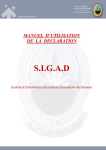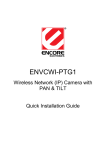Download ZK-HC08AX-A User`s Manual
Transcript
ZK-HC08AX-A Starter Kit for Freescale MC68HC908AB/AS/AZ Family (64-Pin QFP ZIF Socket) User’s Manual 1. Introduction Overview The ZK-HC08AX-A Starter Kit has been designed for the evaluation of the Freescale MC68HC908AB/AS/AZ family and the debugging of user applications. The ZK-HC08AX-A Starter Kit can be used as a standalone application, or via its built-in USB to MON08 bridge, or together with an external debugger through a MON08-compatible connection. Starter Kit Features The ZK-HC08AX-A Starter Kit features the following sections. 1. An “MCU” section containing: An MC68HC908AZ60A microcontroller (in 64-pin QFP package, already programmed with a demo application—in addition, you can also use any other pin-to-pin-compatible device); SofTec Microsystems E-mail (general information): [email protected] E-mail (marketing department): [email protected] E-mail (technical support): [email protected] Copyright © 2005 SofTec Microsystems® DC00906 Web: http://www.softecmicro.com Important SofTec Microsystems reserves the right to make improvements to its products, their documentation and software routines, without notice. Information in this manual is intended to be accurate and reliable. However, SofTec Microsystems assumes no responsibility for its use; nor for any infringements of rights of third parties which may result from its use. SOFTEC MICROSYSTEMS WILL NOT BE LIABLE FOR DAMAGES RESULTING FROM LOSS OF DATA, PROFITS, USE OF PRODUCTS, OR INCIDENTAL OR CONSEQUENTIAL DAMAGES, EVEN IF ADVISED OF THE POSSIBILITY THEREOF. Trademarks Freescale™ and the Freescale logo are trademarks of Freescale Semiconductor, Inc. Metrowerks and CodeWarrior are trademarks or registered trademarks of Metrowerks Corp. Metrowerks is a wholly-owned subsidiary of Freescale Semiconductor. Microsoft and Windows are trademarks or registered trademarks of Microsoft Corporation. PC is a registered trademark of International Business Machines Corporation. Other products and company names listed are trademarks or trade names of their respective companies. ZK-HC08-AX-A User's Manual ZIF socket for the microcontroller; A connector area to access the I/O pins of the microcontroller for expansion prototyping; Two clock sources: a provision for a clock module, and a 8 MHz crystal, selectable via the “OSC SEL” jumper; One jumper (“VREFH SEL”) which allow the high voltage reference for the MCU internal A/D converter to be defined; A connector (J105) with RST_IN# and RST_OUT# signals. 2. 3. 4. 5. 6. A “POWER SUPPLY” section which accepts a 12 V DC voltage (used for the LIN and CAN transceivers) and provides a regulated VDD voltage for the rest of the board. A circuitry (driven by the “MON08 CONNECTORS” and “USB TO MON08 INTERFACE” sections of the board) is present which allows the automatic power on and off of the board for entering the “monitor mode”. A built-in “USB TO MON08 INTERFACE” section which allows the host PC to communicate with the microcontroller through a standard USB interface. USB 2.0 is fully supported. When using an external in-circuit debugger (via the “MON08” or “EMON08” connectors), the “USB TO MON08 INTERFACE” circuitry must be bypassed by removing all of the “ENA” jumpers in this area. Two connectors for external in-circuit debugging/programming. Even though the Starter Kits feature a built-in USB to MON08 interface, two additional, separate MON08 connectors are present which allow an external in-circuit debugger to be used. The “EMON08” (Enhanced MON08) connector is used by in-circuit debugging tools such the Freescale ICS system or the SofTec Microsystems inDART-HC08; other tools, instead, use the “MON08” connector. If you use an external in-circuit debugger/programmer, an additional “VDD CTRL” connector allows you to control the Starter Kit’s VDD voltage using the external tool’s power control. The output impedance (both low and high) of the external tool driving the “VDD CTRL” connector’s VDD_CTRL signal is not important. A “RESET” section containing the push-button connected to the MCU’s reset pin through a basic RC network. An “INPUTS” section containing: Four push-buttons, together with jumpers to connect/disconnect them to/from the microcontroller’s PTH1, PTH0, PTG1 and PTG0 lines; Eight general-purpose DIP-switches, together with jumpers to connect/disconnect them to/from the microcontroller’s PTE[7..4] and PTF[3..0] lines; A potentiometer, together with a jumper to connect/disconnect it to/from the microcontroller’s PTB0/ATD0 pin. 7. 8. An “OUTPUTS” section containing eight high-efficiency (low-current) LEDs connected to port PTD, together with eight jumpers to connect/disconnect each of the eight LEDs to/from their respective port PTD pins. A “RS-232” section providing one RS-232 channel connected to the microcontroller’s SCI serial communication interface. The microcontroller’s PTE0/TXD and PTE1/RXD lines used by the RS232 channel are shared with the LIN transceiver’s RX and TX lines. Page 2 ZK-HC08-AX-A User's Manual Use the “RXD SEL” and “TXD SEL” jumpers in the “SERIAL SETTINGS” section of the board to select whether to use the RS232, LIN, or to free the microcontroller’s PTE0/TXD and PTE1/RXD lines. A 9-pin, D-Sub female connector is provided for the RS-232 channel. 9. The “LIN” section contains one LIN transceiver, capable of a speed of up to 100 Kbps in fast mode. The LIN node can be configured as a master node via the “MASTER NODE ENA” jumper, which inserts a 3.3 KOhm resistor between the LIN bus line and the LIN transceiver power supply line. The LIN transceiver can be powered either by the Starter Kit’s internal 12 V DC reference, or by the LIN network itself, via the “TRANSCEIVER SUPPLY SEL” jumper. Analogously, the LIN network can be supplied by the Starter Kit’s internal 12 V DC reference via the “LIN SUPPLY ENA” jumper. The microcontroller’s PTE0/TXD and PTE1/RXD lines used by the LIN transceiver are shared with the RS-232 transceiver’s TXD and RXD line. Use the “TXD SEL” and “RXD SEL” jumpers in the “SERIAL SETTINGS” section of the board to select whether to use the RS232, LIN, or to free the microcontroller’s PTE0/TXD and PTE1/RXD lines. A 3x1 male header connector is provided to interface to an external LIN bus. 10. The “SERIAL SETTINGS” section has two jumpers (“TXD SEL” and “RXD SEL”) that allow the use of the SCI peripheral of the microcontroller to be chosen. The SCI peripheral can be connected to the LIN node or to the RS-232 channel , or can be freed by removing all jumpers. 11. The “CAN” section contains one fault-tolerant (up to 125 Kbaud) CAN transceiver. The TX and RX signals of CAN node can be disconnected by removing the “CANTX ENA” and “CANRX ENA” jumpers from the microcontroller’s CANTX and CANRX pins. A 3x1 male header connector is provided to interface to an external CAN bus. 12. A prototype area features both a standard, thru-hole area (for mounting traditional components) and a SMD area (for soldering SMD components). Additionally, all of the board’s supply lines (12 V, VDD and GND lines) are provided. 2 8 11 4 9 10 3 1 6 12 5 7 The ZK-HC08AX-A Starter Kit Page 3 ZK-HC08-AX-A User's Manual Supported Devices The ZK-HC08AX-A Starter Kit supports the following devices: MC68HC908AB family; MC68HC908ASxxA family; MC68HC908AZxxA family; And any future pin-to-pin compatible device. Recommended Reading Freescale HC08 microcontroller-specific datasheets; SK-HC08 and ZK-HC08 Series Starter Kit User’s Manual; ZK-HC08AX-A Schematic. 2. The “RST_IN/RST_OUT” Connector Introduction All of the HC08 family devices feature a monitor code resident in ROM which, through a serial communication line, allows the programming and the in-circuit debugging of the user application. The monitor code is executed in “monitor mode”; the user application is executed in “user mode”. To enter the monitor mode some microcontroller lines must be properly driven. In the case of the MC68HC908AB, AS and AZ families, these lines are PTA0 (serial communication line), PTC0, PTC1 and PTC3. Additionally, to enter the monitor mode, a high-level voltage signal (VTST) must be generated on the IRQ and RST pins of the microcontroller. In the case of the MC68HC908AB, AS and AZ families, the VTST voltage is typically 8.1 V. The “RST_IN#/RST_OUT#” Connector The “RST_IN#/RST_OUT#” connector, in the “MCU” section of the board, features the RST_IN# and RST_OUT# signals. Depending on what in-circuit debugger/programmer you are using (builtin USB to MON08 interface, external tool connected to the “EMON08” connector or external tool connected to the “MON08” connector) the RST_IN# and RST_OUT# signals assume different meanings. Using the “EMON08” Connector Interfacing an external in-circuit debugger/programmer via the “EMON08” connector allows the number of wasted lines required to enter the monitor mode and executing the monitor code to be reduced. In addition to the RST# line, the “EMON08” connector features two special lines, RST_IN# and RST_OUT#, which allow your target application to be interfaced to the target microcontroller’s reset line without worrying about the high voltage that is generated on the RST# line. When using the “EMON08” connector: The RST_OUT# signal in the “RST_IN#/RST_OUT#” connector is the reset signal generated by the external in-circuit Page 4 ZK-HC08-AX-A User's Manual debugger/programmer to the target system: it can be GND or open drain. The RST_IN# signal is the reset signal generated by your target application: it is adapted by the external in-circuit debugger/programmer which properly drives the microcontroller’s RST# line. Using the “MON08” Connector When using the “MON08” connector, the RST_IN# and RST_OUT# signals in the “RST_IN#/RST_OUT#” connector coincide with the microcontroller’s RST# signal. Using the Built-In USB to MON08 Interface When using the built-In USB to MON08 Interface, the RST_IN# and RST_OUT# signals in the “RST_IN#/RST_OUT#” connector coincide with the microcontroller’s RST# signal. 3. Summary of Jumper and Connector Settings Jumpers Summary Name Reference J106 2 1-2 (USER) 3 J108 J109 1 Description/Pinout VREFH SELECTION 1 1 VREFH connected to the J104 connector 2-3 (VDD) VREFH tied to VDD (default) EMON08 CONNECTOR Installed Not Installed J111 1 2 3 J201 When using the built-in USB to MON08 interface or an external in-circuit debugger/programmer connected to the “MON08” connector (default) When using an external in-circuit debugger/programmer connected to this connector OSC SEL 1-2 (CLOCK) 2-3 (CRYSTAL) Clock selected Crystal configuration selected (default) PTG0 PUSH-BUTTON ENABLE Installed J202 The PTG0 push-button is connected to the microcontroller’s PTG0 pin (default) Not Installed The PTG0 push-button is not connected to the microcontroller PTG1 PUSH-BUTTON ENABLE Installed Not Installed The PTG1 push-button is connected to the microcontroller’s PTG1 pin (default) The PTG1 push-button is not connected to the microcontroller Page 5 ZK-HC08-AX-A User's Manual Name Reference Description/Pinout PTH0 PUSH-BUTTON ENABLE J203 Installed The PTH0 push-button is connected to the microcontroller’s PTH0 pin (default) Not Installed The PTH0 push-button is not connected to the microcontroller PTH1 PUSH-BUTTON ENABLE J204 Installed The PTH1 push-button is connected to the microcontroller’s PTH1 pin (default) Not Installed The PTH1 push-button is not connected to the microcontroller POTENTIOMETER ENABLE J205 Installed J206 1 The potentiometer is connected to the microcontroller’s PTB0 pin (default) Not Installed The potentiometer is not connected to the microcontroller SWITCH ENABLE Installed Not Installed J207 1 LED ENABLE Installed Not Installed J303 Each jumper, when installed, connects a LED to the respective microcontroller’s pin (default) The LEDs are not connected to the microcontroller. CANTX ENABLE Installed J304 Each jumper, when installed, connects a DIP-switch to the respective microcontroller’s pin (default) The DIP-switches are not connected to the microcontroller. Not Installed CANRX ENABLE Microcontroller’s TXCAN pin connected to CAN transceiver (default) Microcontroller’s TXCAN pin floating Installed J306 Microcontroller’s RXCAN pin connected to CAN transceiver (default) Not Installed Microcontroller’s RXCAN pin floating LIN SUPPLY ENABLE Installed Not Installed LIN bus is powered by the Starter Kit’s internal 12 V DC voltage (default) LIN bus is self-powered Page 6 ZK-HC08-AX-A User's Manual Name Reference J307 1 2 Description/Pinout LIN TRANSCEIVER SUPPLY SELECTION J308 LIN transceiver is supplied by the Starter Kit’s internal 12 V DC voltage (default) 2-3 (LIN NETWORK) LIN transceiver is supplied by the LIN bus’ VBAT line LIN MASTER NODE ENABLE J311 Installed LIN master node (default) Not Installed LIN slave node RS-232/LIN RXD SELECTION 3 1 2 3 J312 1 2 3 J402 1 1-2 (12V) 1-2 (LIN) Microcontroller’s PTE1/RXD pin connected to LIN transceiver 2-3 (RS-232) Microcontroller’s PTE1/RXD pin connected to RS-232 transceiver (default) RS-232/LIN TXD SELECTION 1-2 (LIN) Microcontroller’s PTE0/TXD pin connected to LIN transceiver 2-3 (RS-232) Microcontroller’s PTE0/TXD pin connected to RS-232 transceiver (default) USB TO MON08 ENABLE Installed Not Installed The USB to MON08 interface is enabled The USB to MON08 interface is disabled Connectors Summary/Pinout Name J101, J102, J103, J104 J105 Reference Description/Pinout MCU I/O Connectors See schematic for pin explanation 1 2 RST_IN# and RST_OUT# 1. 2. RST_IN# RST_OUT# Page 7 ZK-HC08-AX-A User's Manual Name Reference Description/Pinout J107 1 2 MON08 Connector 3 4 5 6 7 8 9 10 11 12 13 14 15 16 1 2 3 4 5 6 7 8 9 10 11 12 13 14 15 16 J108 J109 1 J110 1 1. VDD_CTRL 2. GND Ground Test Point J112 2 12 V DC Power Supply Input Connector 1 1. 12 V DC 2. GND Ground Test Point J302 J305 J309 1. RST_OUT# 2. GND 3. RST_IN# 4. RST# 5. TGT_IRQ# 6. IRQ# 7. N.C. 8. N.C. 9. TGT_PTA0 10. PTA0 11. TGT_PTC0 12. PTC0 13. TGT_PTC1 14. PTC1 15. TGT_PTC3 16. PTC3 EMON08 Connector 1. RST# VDD CTRL 2 J301 1. N.C. 2. GND 3. N.C. 4. RST# 5. N.C. 6. IRQ# 7. N.C. 8. N.C. 9. N.C. 10. PTA0 11. N.C. 12. PTC0 13. N.C. 14. PTC1 15. VDD_CTRL 16. PTC3 EMON08 Connector 1 1 3 CAN Connector 3 1. CANH – CAN Differential Bus Line 2. GND 3. CANL – CAN Differential Bus Line LIN Connector 1. 2. 3. VBAT – LIN Bus Power Supply LIN – LIN Signal GND Page 8 ZK-HC08-AX-A User's Manual Name Reference Description/Pinout J310 RS-232 Connector J401 1. N.C. 2. TX 3. RX 4. N.C. 5. GND 6. N.C. 7. N.C. 8. N.C. 9. N.C. USB Connector 9 5 6 1 1. 2. 3. 4. 5 V DC USB Bus Power Supply Line USB DUSB D+ GND Page 9









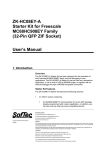


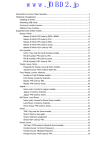




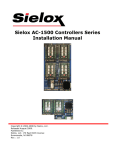

![[DRAFT] DEMO908JL16 User`s Manual](http://vs1.manualzilla.com/store/data/005639706_1-2a84cd2ce2f0b318fdb7aae7896f2a79-150x150.png)
